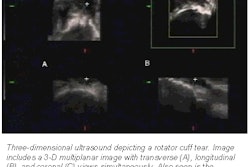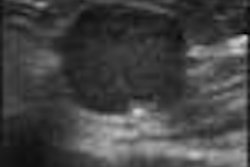(Ultrasound Review) The aim of a study conducted by the University of Helsinki in Finland was to evaluate the usefulness of power Doppler transvaginal ultrasound to determine the diagnostic reliability of sonographic findings.
Transvaginal power Doppler findings were analyzed in 30 women who underwent laparoscopy for suspected acute pelvic inflammatory disease (PID) and compared with another group of 20 women with hydrosalpinx formation. These findings were published by Ultrasound in Obstetrics & Gynecology.
Characteristic ultrasound features for PID include pear-shaped sonolucent or particulate fluid-containing structures, cogwheel signs, or beads-on-a string signs.
Power Doppler was used to assess adnexal mass vascularity and pulsed Doppler was used to determine the pulsatility index (PI). Of the 30 women suspected of having PID laparoscopic surgery, 20 women were shown to have the disease.
Patients with acute salpingitis displayed an ill-defined, elongated, non-cystic adnexal mass that was separate from the ovary on gray scale. Power Doppler demonstrated hyperemia that was consistent with inflammation.
All patients with pyosalpinx exhibited a convoluted, pear-shaped cystic mass with tubal wall thickness >5mm, and most showed incomplete septa or cogwheel signs. An adnexal mass was demonstrated in women with tubo-ovarian abscess; tubal and ovarian anatomy was not demonstrable.
These characteristic ultrasound signs were significantly more common in women with PID compared with the reference group of 20 women with hydrosalpinx. Comparing the PI, the study group with PID showed significantly lower indices than the reference group.
"The present study showed that acute PID and non-acute hydrosalpinx formation can be discriminated by transvaginal ultrasound. In the hands of an expert operator and with state-of-the-art equipment, transvaginal ultrasound detected all PID cases and allowed accurate distinction between mild and severe PID," the study stated.
"Transvaginal power Doppler findings in laparoscopically proven acute pelvic inflammatory disease"P Molander et al
Dept. of Obstetrics and Gynecology, University of Helsinki, Helsinki, Finland
Ultrasound in Obstet & Gynecol 2001 (March); 17:233-237
By Ultrasound Review
June 4, 2001
Click here to post your comments about this story. Please include the headline of the article in your message.
Copyright © 2001 AuntMinnie.com



















